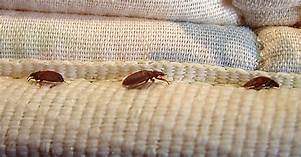What is an Axolotl Pet?
The axolotl (Ambystoma mexicanum) is a unique and fascinating creature that has captured the attention of pet enthusiasts and scientists alike. Endemic to the canals and lakes of Mexico City, these aquatic salamanders possess a remarkable ability to regenerate lost limbs and organs. Their friendly nature and ease of care make them a popular choice for hobbyists, but there is much to know about these animals before bringing one home.

Characteristics of Axolotls
1. Appearance:
Axolotls are characterized by their long, slender bodies, which can range from 6 to 12 inches in length. They have a flat head with a wide mouth and small eyes. Their skin is smooth and slimy, and they come in various colors, including black, brown, white, and pink.
2. Lifespan:
Under proper care, axolotls can live for an average of 10 to 15 years, although some individuals have been known to live for up to 20 years.
3. Diet:
Axolotls are carnivorous and primarily feed on live or frozen foods, such as bloodworms, tubifex worms, brine shrimp, and small fish. They may also accept commercial axolotl pellets or flakes, but it is essential to ensure a balanced diet.
4. Behavior:
Axolotls are generally docile and friendly creatures, and they are not known to bite or harm humans. They spend most of their time swimming around their tank, searching for food, or resting on the bottom. Axolotls are nocturnal, meaning they are most active at night.
Axolotl Care and Habitat
1. Tank Size:
Axolotls require a spacious tank that is at least 20 gallons in size, with a secure lid to prevent escapes. The tank should be filled with clean, dechlorinated water that is kept at a temperature between 60 to 68 degrees Fahrenheit (15.5 to 20 degrees Celsius).
2. Water Parameters:
Axolotls are sensitive to water quality, so it is essential to maintain proper pH levels (6.5 to 8.0) and ammonia and nitrite levels close to zero. Regular water changes and the use of a filter and heater are necessary to keep the water clean and suitable for the axolotl's health.
3. Substrate:
Axolotls should be provided with a soft, sand-like substrate that will not damage their delicate skin. Avoid gravel or other coarse substrates, as these can cause injuries or impaction.
4. Hiding Places:
Axolotls appreciate having hiding places in their tank, such as caves, rocks, or driftwood. These provide them with a sense of security and help reduce stress.
5. Feeding:
Axolotls should be fed live or frozen foods, such as bloodworms, tubifex worms, brine shrimp, and small fish. They may also accept commercial axolotl pellets or flakes. Feed your axolotl once or twice a day, and only give them as much food as they can consume in a few minutes.
Special Considerations
1. Regeneration:
Axolotls are famous for their remarkable ability to regenerate lost limbs and organs. While this is an incredible feat, it also means that these animals can be more prone to injuries. Be careful when handling axolotls, and avoid touching their gills or other delicate areas.
2. Toxicity:
Axolotls are sensitive to chemicals and medications commonly used in aquariums. Always consult a veterinarian before adding anything to their tank, as certain substances can be toxic to these animals.
3. Breeding:
Axolotls can be bred in captivity, but it is a complex process that requires specialized knowledge. If you are interested in breeding axolotls, it is essential to do your research and consult with experienced breeders.
Declaration: All article resources on this website, unless otherwise specified or labeled, are collected from online resources. If the content on this website infringes on the legitimate rights and interests of the original author, you can contact this website to delete it.




